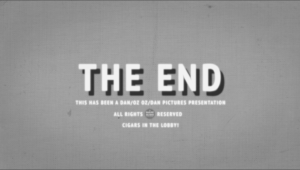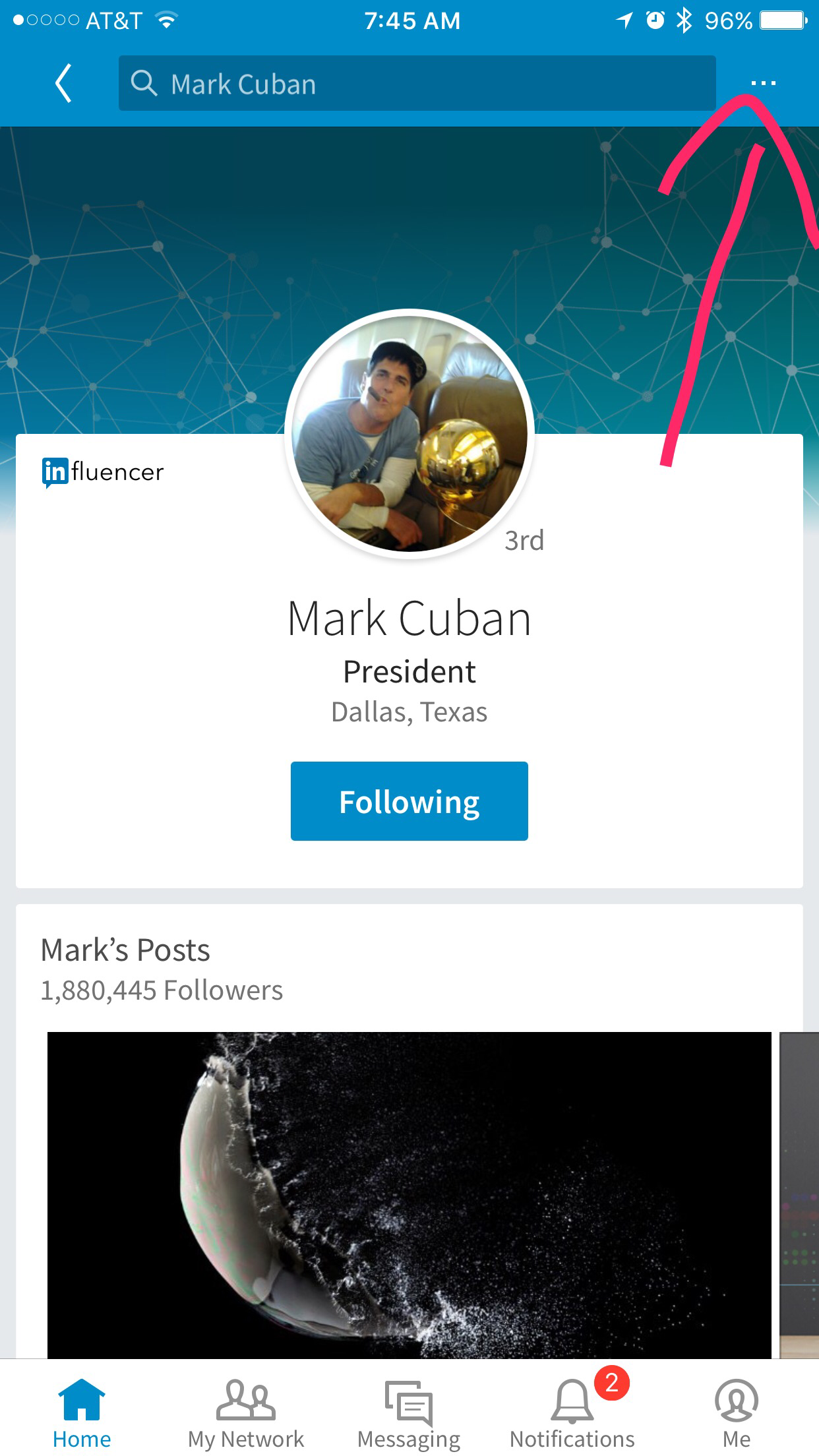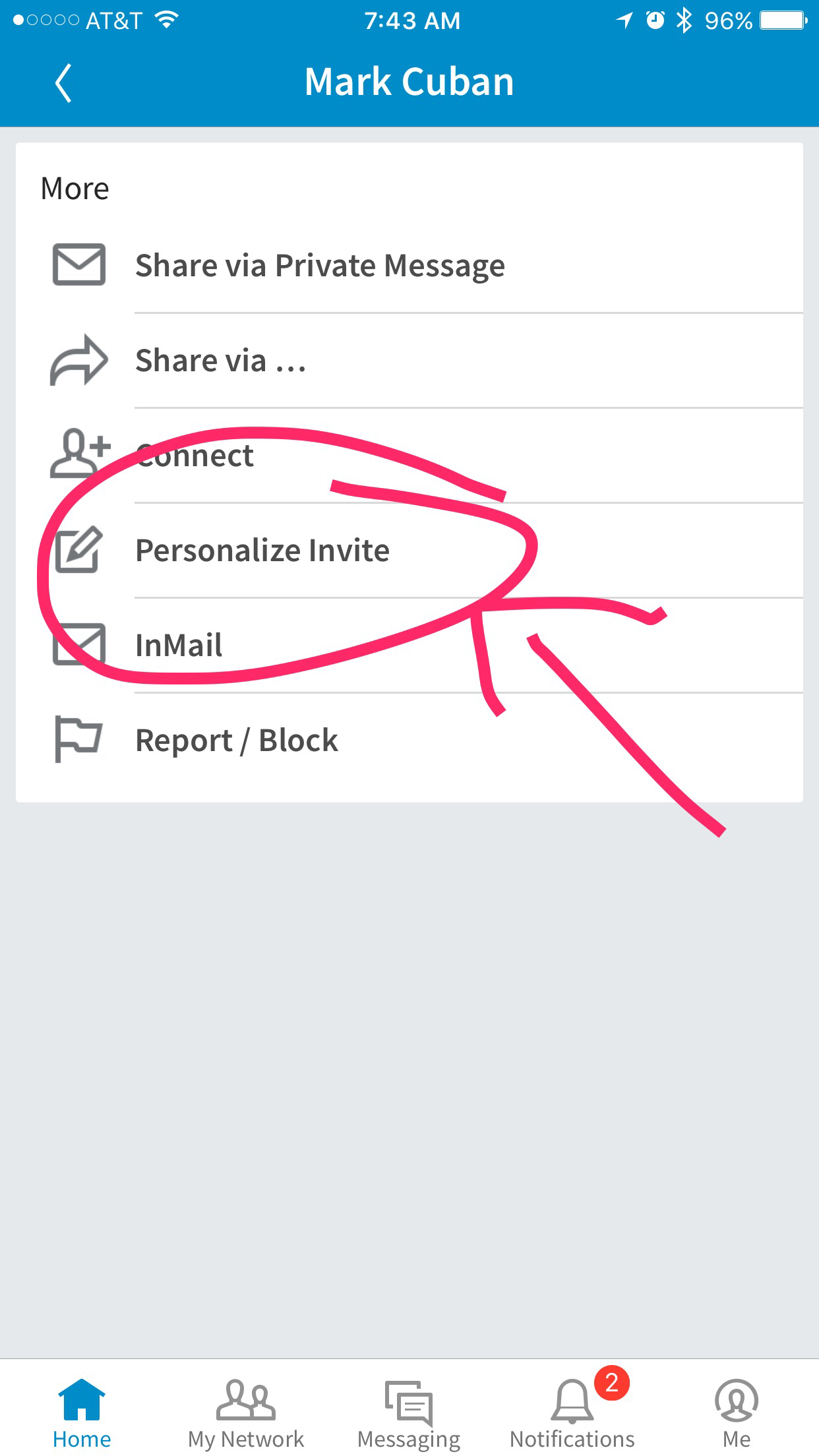Is this what the Fort Worth Facebook Data Center will look like?
In a recent post on Facebook, Zuckerberg shared pictures from inside the Luleå Data Center in Sweden.
It’s pretty cool looking. Literally, cool looking. It looks like my memories might need a jacket.
We might not realize that when you upload a photo or share something on Facebook, that file is actually stored on computers somewhere(s). The trick with Facebook is that they have it stored in many many locations at once, which creates redundancy. That’s a fancy for lots of duplicates and backups of the same stuff.
As you flip through the pics, you can see that they are protecting privacy by wiping, and then physically destroying outdated hard drives.
With the Fort Worth Data Center looking like it’ll be ready around the same time as George R.R. Martin’s next novel, The Winds of Winter; it appears our climate will be a bit milder in the next couple of years.
If you are looking to read more posts… check this one out.
Until later…
UTA Fort Worth Campus this morning

Bon Iver's new album has me skipping back to tracks 8 and 9.
I am a full album guy. I typically listen to albums from artists like Bon Iver all the way through. But Bon Iver's new album just dropped, and I keep skipping back to tracks 8 and 9.
How I fell prey to curse of knowledge
I have messed up our company messaging in the past and it took me a long time to understand how and why it happened...
In my business, I have people who are not that familiar with the marketing world come to me and ask me how I might be able to help them. I think I've confused a lot of them in the past.I’ve used too much jargon, and I’ve made their heads spin.
It’s funny, because these kinds of things (like jargon prospect are likely to not understand) are easy for me to spot in one of our clients' elevator pitches or on their website, but it’s harder to see in the mirror.
The reason why is an example of a “cognitive bias” we have as humans. There are many of these biases that hamper our decision-making abilities. The only way to avoid these traps, is to study them. So that is what we will do together.
The Curse Of Knowledge
An example of the curse of knowledge is demonstrated in a classroom setting, where teachers, or subject experts, have difficulty teaching novices because they cannot put themselves in the position of the student. A brilliant professor may no longer remember the difficulties that a young student may be encountering when learning a new subject. - WikipediaWhen I have run into problems with this in my own business, I found I was no different. I had my head way up my own ass.
The folks who understood the language I was using had no problem understanding me, and deals got done. But I tended to have a harder time beginning relationships with complete newbies to inbound marketing marketing communication & strategy.
I’ve had people tell me they “just aren’t ready to tackle all this”, and some have said things like they just straight up “don’t get it”.
What I realized after one such conversation earlier this year, is that there’s just a bunch of junky words that had to go. Since then, I have mostly thrown out any of this language in my sales conversations.
Going Airborne
Take a look at this instruction on the inside of a Boeing 737 airplane.
The photographer entitled it Technical Writing for a reason. These were clearly written for other engineers and not passengers. To me that door reads, “Don’t ever touch this!”. So, to a certain extent, I guess its doing the intended job.
But, let’s pretend we had to warn passengers about that door and explain more than Which is how I read that currently How would you word it?
Well, I don’t know… I was asking you. I’m not an engineer.
The lesson here is that you have to balance technical knowledge with being able to put yourself in the intended audience’s shoes. You may need to bring in someone who isn’t as close to your stuff as you are to translate your version of the signs above into human English.
Attacking the Curse of Knowledge in my Business
The CEO of a manufacturing company doesn't care about content marketing, social media marketing, or even lead generation.She cares about creating more valuable and profitable long-term relationships with customers because this brings in more revenue and makes her company more profitable. Those jargon-filled words above only lead to more confusion about the overall process.
What I have learned is that when I frame some of the things my company helps folks figure out in way that is relevant to their world-view, they start to get it.
Time for some Jargon Surgery
So I am tearing down our company website over the next week and we are updating our messaging to try to eliminate some of these biases.I plan to validate these changes with real prospects, and just folks who aren’t intimately familiar with the day-to-day buzzwords and pulse of our world.
I hope you will join me in doing the same.
Are you in?
- Take a look at your own company website or other collateral and show it to people who do not know your space.
- If you have customer service or sales reps, do a ride-along. Listen for their use of jargon, including intra-office abbreviations that are absolute gibberish to the customer. Eliminating these and using the customer's words for these things/roles/processes instead will make a world of difference when it comes to retention.
Photo Credit: Michael Coghlan
Who is coming to eat your lunch?
Disruption is one of those words being thrown around like Halloween candy these days.
So much so that you might start to ignore it and take your place in the market for granted. A recent WSJ headline reads: Amazon’s Newest Ambition: Competing Directly With UPS and FedEx
The Wall Street Journal reports:
Executives at the freight giants are skeptical, and so are analysts and logistics experts. They say it would be difficult and costly to build a domestic delivery network to rival the big U.S. players, especially after the failed multibillion-dollar attempt by Deutsche Post AG’s DHL Express in the 2000s. (WSJ - 9/27/16)
Are they nuts? Did they forget the drone video?
That was published last year on Nov 29, 2015.
They have loudly and boldly declared war on UPS and FedEx and they don’t even seem to acknowledge it. They must be wearing rose colored glasses. ?
How can we forget the story of Barnes & Noble?
One of my favorite tales from this saga was when the Nook was released in 2009. This was two years after the Kindle was released.
The Nook also features integration with Barnes & Noble's retail stores. Users who bring the device into the store will find that special offers, content and discounts pop up on the Nook's screen. Eventually, the company says, customers will be able to read entire e-books for free inside the physical store. (WSJ - 10/21/09)
Kind of missing the whole point of the eBook now weren’t they? These folks don’t want to come to the bookstore to read the book.
What a stark contrast the Nook’s “retail store integration” is from the intuition brought to the design and intent behind the Amazon Kindle.
In 2007, when the Kindle was first introduced, smart people had this to say about it.
"I like the Sony Reader, but it was built by technology people," says Evan Schnittman, vice president business development, rights, academic & USA divisions, Oxford University Press. "The Kindle device was clearly built by readers." (WSJ- 11/20/07)
The logistics giants better wake up and smell the Bezos. Because they are about to lose a big account. I wont be surprised when Amazon decides to use their distribution network to mail my letters to Grandma.
If Bezos can buy the Washington Post, why not the US Post Office?
So after having said all that… who is coming to eat your lunch? Are you seeing the disruption coming from hidden competition?
The record companies didn’t expect a computer company to come after them. The cabbies didn’t expect an app to break them. No one expected the Internet.
Who or what will change your business seemingly overnight? Might you be able to see it coming now if you step outside your bubble?
The idea of hiding until it's perfect is a fool's game.
I was listening to a podcast recently, and I heard Simon Sinek say something that everyone needs to hear.
I jotted it down on Twitter so I wouldn’t forget it:
I, like you, still struggle with it all the time. We wait. “It’s not ready.”
Nothing is ever perfect. No one is judging us so harshly as we judge ourselves.
When I started podcasting, I was really uncomfortable with the sound of my own voice, especially when wearing monitoring headphones while recording. (You do this to make sure you are capturing the sound properly.)
It took a while for me to get used to hearing my voice inside my head like that. It sounded weird. We are used to hearing what our voice sounds like from the inside. But, with practice, I got more comfortable with it over time.
Now, I don’t mind at all. Bethany might even tell you that I am “fond of the sound of my voice” at this point. ?
I didn’t get there overnight. It took lots of reps of just putting my stuff out there. I learned to create an environment where I felt comfortable with the outcomes of what I had produced, and I let it fly.
I knew that it might not be perfect, but that I had made something that day. This furthered my mission.
I haven’t gotten it all figured out, but I am less likely to polish my content before shipping it in hopes of it being perfect.
I can’t stress enough how many times remembering that this is “a fool’s game” has helped me.
That’s bullshit and we know it. If it’s 80% there we need to get it out into the world and see what sticks. Seth Godin tells us to “Ship it.”
I hope this post inspires you to do the same. Because you have important things to do in the world, and if you hold back your work in hopes that it will be perfect someday… it will never get launched, and ideas will die on the vine.
?
In case you missed Simon’s Ted Talk. Spend a few minutes (18 of the most important minutes) watching this. It could change your life.
https://www.ted.com/talks/simon_sinek_how_great_leaders_inspire_action?language=en
??
#harpershashtag

The Happy Days Content Marketing Calendar
The hardest thing to do in content marketing is stay on track with a publishing schedule.
The important thing is to pick something and start with it to see how it goes. Experiment once you have a control group. A status quo other than “nothing” or “occasionally”
If you don’t have a current editorial strategy for each week. I’ll give you one here… and it’s worthy of the Fonz.
Sunday, Monday, Happy Days,Tuesday, Wednesday, Happy Days,
Thursday, Friday, Happy Days
Saturday, what a day
Groovin' all week with you
Your Weekly Editorial Calendar
Publish Sunday, promote Monday, discuss as long as its hot.
Publish Tuesday, promote Wednesday, discuss as long as its hot.
Publish Thursday, promote Friday, discuss as long as its hot.
Email Saturday.
Happy Days.
Publish
We will cover what to publish in another post.
Publish is paired with a link share on real time social platforms.
Example: blog post goes up; employees (and company page) share link with a quick note on Twitter or LinkedIn. “New post on the blog: “The Happy Days Content Marketing Calendar” LINK
Promote
Promote means writing a bite-sized “commercial” for your post, to be used as a native update/post on other platforms.
You can drop these out on successive days if it makes sense.
Email is a roundup newsletter of the weeks posts or a call to action to check them out.
This can be automated or you can do it manually. I suggest you automate it if you think you may not follow through every week at the same time.
Reply as long as you get responses and engagement.
Discuss
When people comment or reply to you, you should comment or reply back.
Most folks don’t comment because they are somewhat timid in putting themselves out there.
You should encourage them and never make them feel like their comment fell on deaf ears.
Conclusion
You don’t have to do the above, but do something, and stick to it.
Feel free to time-shift the above Days and make it work for your audience. The truth is there is no perfect day or time to do/send/publish anything.
I was speaking with a client last week about when to send an email, and whether or not Friday afternoon was a good idea. I asked that we consider the audience. I suggested against it as it was a high value email that included a video.
My first thought was that the target audience wouldn’t make time to sit down and watch it on the way out of work. But, you never know until you try. The audience might be open to an email on Friday afternoon. I do think we should test it.
So get started with something. Stick to it for a while. Then start experimenting with the style and order of things when you get a solid rhythm.
Just don’t jump the shark.

How would your customers describe it? Say it that way instead.
Are you and your customers on a different planet?
I’m always amazed at how folks refer to their own stuff in so much jargon. But I forget that I have done the same for a long time.
Its hard to get out of our own headspace.
It is always important to understand how your customers see your stuff.
Use their words, not yours.
Apple just made some changes to how they describe emoji.
Apple shows us here that they can avoid this trap by listening to the customer and just asking them what they see when they look at emoji.
? Person With Folded Hands is now Hands Pressed Together in the Apple’s new Mac OS Sierra.
Here are some more examples of the old version of the emoji name -> to the new version from an article I recently read.
- ?
Man With Gua Pi Mao-> Man With Chinese Cap - ?
Smiling Face With Open Mouth and Smiling Eyes-> Grinning Face With Squinting Eyes - ?
Face With Look of Triumph-> Huffing With Anger Face - ?
Father Christmas-> Santa Claus - ?
Imp-> Sad Face With Horns
To the emoji user in the US, these emotions, names, and words make more colloquial sense. Unless you watch Game of Thrones, in which case you hear the word imp quite a bit. ?
So listen to how your customers speak, and how they perceive your offerings. Or winter will be coming sooner than you think. ☃️
emoji name switches found via via Unicode Names Replaced in macOS Sierra.
How would your customers describe it? Say it that way instead.
How would your customers describe it? Say it that way instead.
Are you and your customers on a different planet?
I’m always amazed at how folks refer to their own stuff in so much jargon. But I forget that I have done the same for a long time.
Its hard to get out of our own headspace.
It is always important to understand how your customers see your stuff.
Use their words, not yours.
Apple just made some changes to how they describe emoji.
Apple shows us here that they can avoid this trap by listening to the customer and just asking them what they see when they look at emoji.
🙏 Person With Folded Hands is now Hands Pressed Together in the Apple’s new Mac OS Sierra.
Here are some more examples of the old version of the emoji name -> to the new version from an article I recently read.
- 👲 Man With Gua Pi Mao -> Man With Chinese Cap
- 😄 Smiling Face With Open Mouth and Smiling Eyes -> Grinning Face With Squinting Eyes
- 😤 Face With Look of Triumph -> Huffing With Anger Face
- 🎅 Father Christmas -> Santa Claus
- 👿 Imp -> Sad Face With Horns
To the emoji user in the US, these emotions, names, and words make more colloquial sense. Unless you watch Game of Thrones, in which case you hear the word imp quite a bit. 🦁
So listen to how your customers speak, and how they perceive your offerings. Or winter will be coming sooner than you think. ☃️
emoji name switches found via via Unicode Names Replaced in macOS Sierra.
Bias
To understand others, you must understand yourself.
One of most overlooked factors I see when I look at company website and messaging is bias.
You’ll want to dig into consumer behavior (bias being just a small component) if you want to better understand why your own marketing works or doesn’t work.
Bias either drives or stifles demand for your product or service.
What preconceived notions does your prospect have when they first visit your site? Are you addressing them head on? Most companies don’t even really know what that means.
I’ll often hear VP’s of Sales say things like this to their marketing peers: “Just get me in front of them. That’s all I need you to do“
Today, you can no longer rely on that connection being made in the first place. The CEB shows that 57% of the buying decision is already made before the prospect ever reaches out in the first place.
This makes it an especially difficult problem to detect. How are you to deal with biased prospects who never speak up?
Address their bias!
You have to overcome objections and address bias before it comes up in a conversation. Otherwise, these conversations are never likely to start at all.
Understanding bias can revolutionize your connection with the customer in the vital time before they decided reach out to speak with you.
Buster Benson one-upped Wikipedia with his Medium post on Cognitive Bias.
He explains a part of his process on unpacking the complex psychological subject of bias here:
I started with the raw list of the 175 biases and added them all to a spreadsheet, then took another pass removing duplicates, and grouping similar biases (like bizarreness effect and humor effect) or complementary biases (like optimism bias and pessimism bias). The list came down to about 20 unique biased mental strategies that we use for very specific reasons.
Read Buster’s article: https://betterhumans.coach.me/cognitive-bias-cheat-sheet-55a472476b18#.lqnfv2c4r
The History of Email - Eager Blog
Mostly because it seemed like a neat idea. There was no directive to ‘go forth and invent e-mail.— Ray Tomlinson, answering a question about why he invented e-mail
Be human, helpful, and handy.
In a recent report to marketers, Forrester gave tips on how to engage with customers in direct messaging platforms.
With chat apps on the rise (and chatbots providing real-time help with big brands) you need to stay up to date in consumer expectations.
One of Forrester's recommendations stood out to me as a great place to start:
- “Be human, helpful, and handy.” This, the report says, is in contrast with marketers’ traditional role of pushing “their offers in a traditional broadcast.” Instead, focus on two-way conversations that embody your brand’s value.
But don't just do this in chat apps. Make this your default way of being when communicating with anyone as a brand.
Forrester: Here are some ways marketers can adapt to messaging apps
Publish or Perish
Does the academic adage apply to business?
If I asked you if you consider yourself a decent business communicator, what would you say?
There’s communicating internally and externally. Most folks are capable of communicating with their peers within their company in a constructive way.
You are likely one of those people. But, how would you rate yourself on communicating with the public?
Many people cite a fear of public speaking.
Is this you?
Would you rather be in the casket, than doing the eulogy?
You’d better be prepared to be edged out by competitors (internal and external) that are getting more comfortable with publishing content in a public forum.
According to Wikipedia:
"Publish or perish" is a phrase coined to describe the pressure in academia to rapidly and continually publish academic work to sustain or further one's career.
I think it's time to recognize that this applies now to the business world as well.
I’m not the only one who feels this way…
In an amazingly succinct article from David Meerman Scott, you can learn a whole lot about marketing communications in the connected age.
He asks:
What are you?If you’re creating great content, it means you’re great!
If you’re creating crappy content, it means you’re crappy.
And if you’re not creating anything, buyers won’t even find you.
Read more from David Meerman Scott on LinkedIn: You Are What You Publish
[caption id=“attachment_92” align=“aligncenter” width=“300”] Images in this post via Dan Scivoletti[/caption]
Images in this post via Dan Scivoletti[/caption]
How to customize LinkedIn Connection requests on your phone
You learn something new every day.
I've accidentally hit the connect button on my phone many times and cringed, knowing the request wouldn't be personalized.
Many people will tell you they delete non-personalized LinkedIn connection requests.
In an INC article (link below), a solution is offered.
I went ahead and took some screenshots and added them below to add value to your day.
On a desktop, it's easy to customize the connection request. You can go to the person's profile page and use the "connect" feature.
While I don't think this is the only factor in that decision, it does come off as lazy when you get one without a note.
However, when you visit a person's profile on the mobile app and hit the same "connect" button, it automatically sends the default text invite. What most mobile app users don't know is before you hit "connect" in a person's profile in the app, you need to hit the three tiny dots in the upper right corner of your phone screen...

which produces a set of options that includes customizing the connection request.

This little-known feature could help you dramatically increase your connections requests when using the app.
There's more in the original article. Check it out.
Original article:
The Huge Mistake People Make On LinkedIn's Mobile App | Inc.com
Salespeople need to create their own case studies and content
The following is an excerpt from an article from Pete Caputa of HubSpot:
Hopefully, your company prioritizes the publication of case studies. (HubSpot produces new case studies on a regular basis. Our top reps can recite the facts and quotes from many of them.) If your marketing team doesn’t do this for you, follow seasoned sales and marketing expert Todd Hockenberry’s advice:
"Smart salespeople will stop waiting for their marketing teams to create case studies for them. They’ll take things into their own hands. Salespeople will more consistently ask up front for the right to create a case study when they deliver the value promised to their client. Then they'll interview and help craft the case study story, making it about the value delivered to their client in the client's own words.”
Read the rest of the article here:
http://blog.hubspot.com/sales/the-first-sales-call-conundrum
A Great Ogilvy Quote
Ogilvy’s advice to the copywriter below is extremely important for anyone who communicates. Especially marketers, copywriters, and salespeople.
“Do not, however, address your readers as though they were gathered together in a stadium. When people read your copy, they are alone. Pretend you are writing each of them a letter on behalf of your client. One human being to another, second person singular.” - David Ogilvy
Think about how that can apply to written, audio, and video content. Create for an audience of one.
Thanks to Dave Gerhardt from Drift for surfacing this quote on his recent post:
Some general tips on PowerPoint presentations.
A lesson in communication from B-school.
Re: Some general tips on PowerPoint presentations.
That was the subject line of the email I got today from a professor in my MBA program.
I thought it was incredibly simple and practical advice and I’d hate to see it only live in an email to just a few folks.
I’m reprinting the advice here as a reminder to myself of what to do in the future.
Many of these things, I’d like to think I’ve learned and picked up along the way. But I haven’t codified them as has my 68-year old professor.
So, this email came in the context of a group presentation that is coming up next week:
Re: Some general tips on PowerPoint presentations.
15 minutes time--keep it pretty close to that.
Use a sans serif font such as Arial or Tahoma--those are easier to read on slides.
Keep color contrast strong--dark background with white or light colored print--if colors too similar, can be hard to read. Some templates have colored swirls in them that can distract from text.
Pictures and graphs are good as they add interest to the slides.
Font should be relatively large--usually 28 to 36 point. Small stuff is too hard to read.
Don't crowd too much on a slide (like I did last night).
It’s pretty amazing advice for anyone in business to remember, and I hope it is useful for you in the future as I’m sure it has been for my professor’s students over the years.
Marketing Lessons from Dr. Nash - Andrew Frank
You’ll want to read this article about the marketing lessons from the game theory discoveries of John Nash (A Beautiful Mind).
Here are a couple of choice samples.
If you’re not analyzing your competitors’ choices, you’re probably going to lose. If this sounds obvious, consider how much time and effort marketers spend these days on the trending topic of customer experience (CX).
But how often does the question come up: “how are my competition’s strategic choices affecting my customers’ perceptions?”